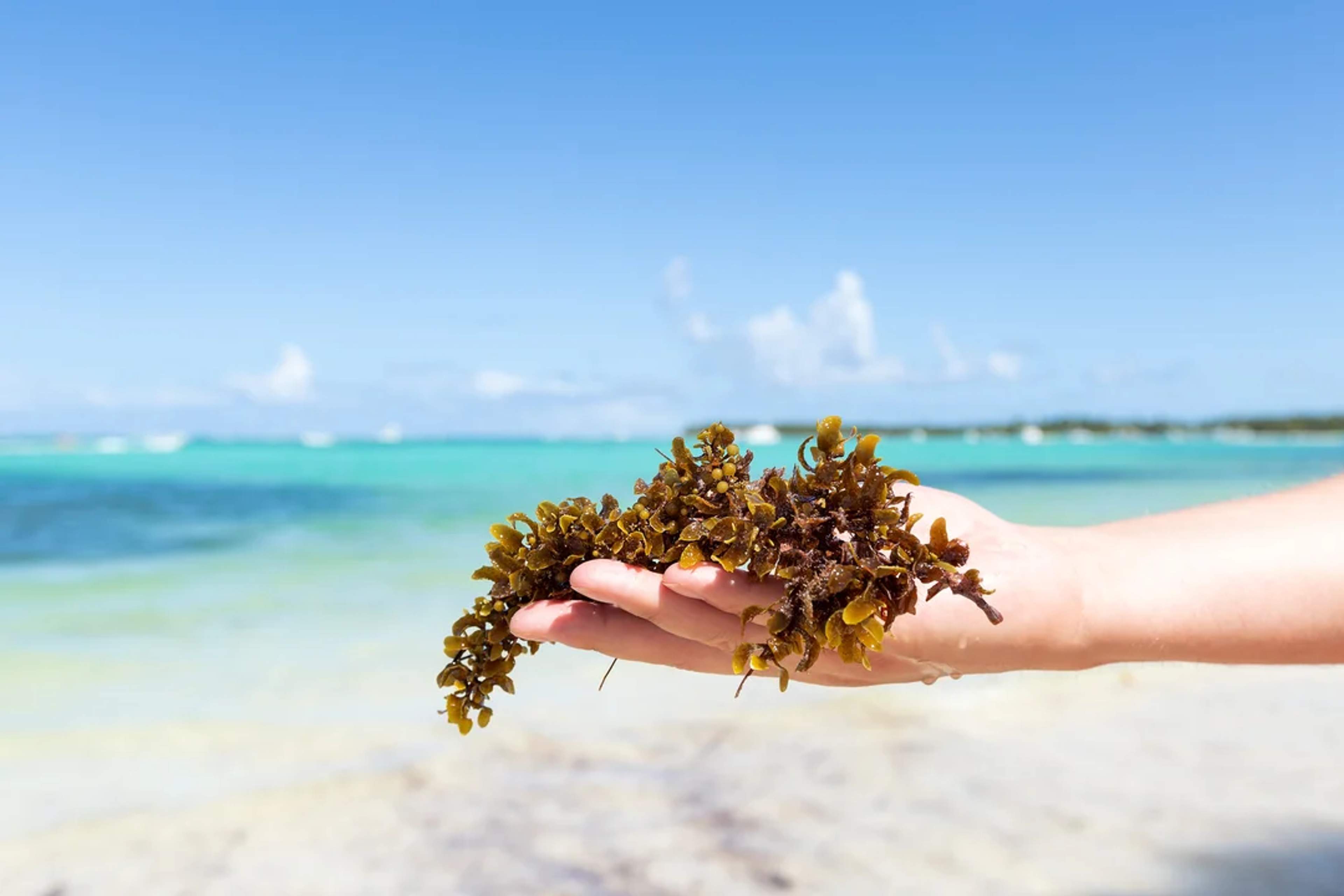Sargassum in Cancun is taken seriously. While this natural seaweed can impact the beach experience during certain months, the city and surrounding areas have implemented coordinated strategies to manage it—daily cleanups, offshore barriers, and real-time tracking all help keep beaches as clear as possible. Most resorts in the Hotel Zone maintain swimmable shorelines even during peak season.
Still, it's helpful to understand what sargassum is, why it shows up, and how it might affect your trip. This guide covers seven key facts for 2025, with insights from trusted sources like the Centers for Disease Control and Prevention (CDC) and the Environmental Protection Agency (EPA), so you can travel confidently and make the most of your time in Cancun.
1. What Is Sargassum, Really?
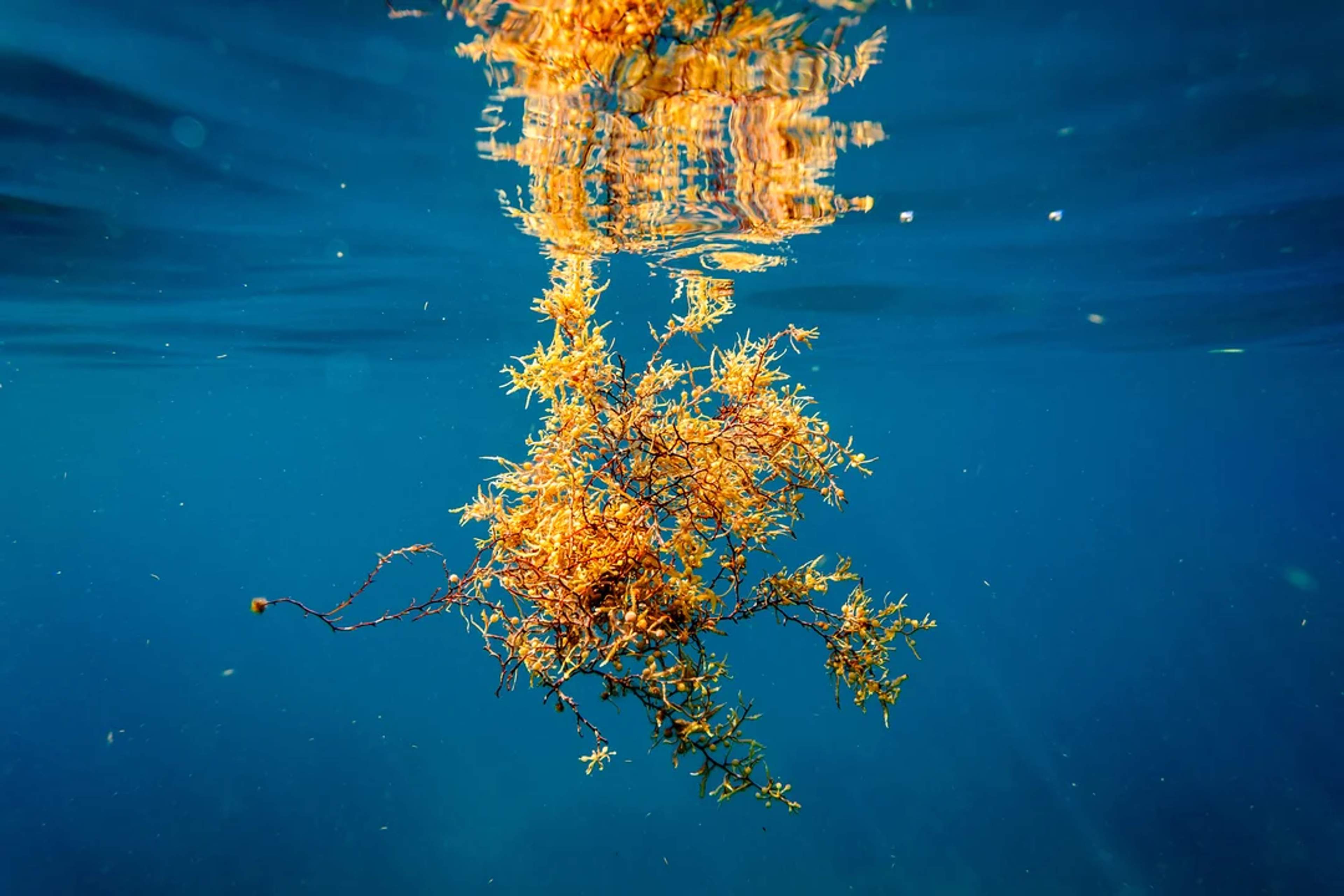
Sargassum is a naturally occurring brown algae found in warm Atlantic waters. Unlike seaweed that grows on the ocean floor, sargassum floats on the surface in massive mats, carried by wind and current. It’s easy to spot with its golden color and air-filled bladders, which help it stay buoyant.
Offshore, it plays an essential role in ocean ecosystems. According to the EPA, floating sargassum provides food and habitat for over 120 species of fish and invertebrates. Sea turtles, especially hatchlings, use these drifting mats as shelter.
The problem arises when it drifts ashore. Once on land, it starts to decompose, releasing hydrogen sulfide—a gas that smells like rotten eggs. While this smell is unpleasant, it’s part of a natural breakdown process.
Understanding sargassum as a seasonal, ecological event, rather than a man-made issue, helps travelers put it in perspective. It’s not dangerous, just occasionally inconvenient if it arrives during your stay.
2. Why Does It Wash Up on Cancun’s Beaches?
Sargassum doesn’t originate in Cancun. It forms thousands of miles away in the Sargasso Sea, located in the North Atlantic. From there, massive floating mats drift westward, eventually reaching the Gulf of Mexico and Caribbean coasts, including Mexico’s Riviera Maya.
Increased amounts of sargassum in recent years are due to a combination of global factors. Climate change warms the water, allowing algae to grow more rapidly. Deforestation and fertilizer runoff from rivers like the Amazon introduce nutrients that act like fertilizer for algae blooms. Even dust storms from the Sahara contribute iron that feeds sargassum growth.
In 2025, scientists attribute higher-than-normal accumulations to La Niña conditions and warmer sea temperatures. Though the phenomenon is driven by forces far from Cancun, its impact is felt along the shoreline.
While the science may be complex, the takeaway is simple: sargassum's arrival is part of a broader natural cycle, not something local tourism can control, but it can be managed.
3. When Is Sargassum Season in Cancun?
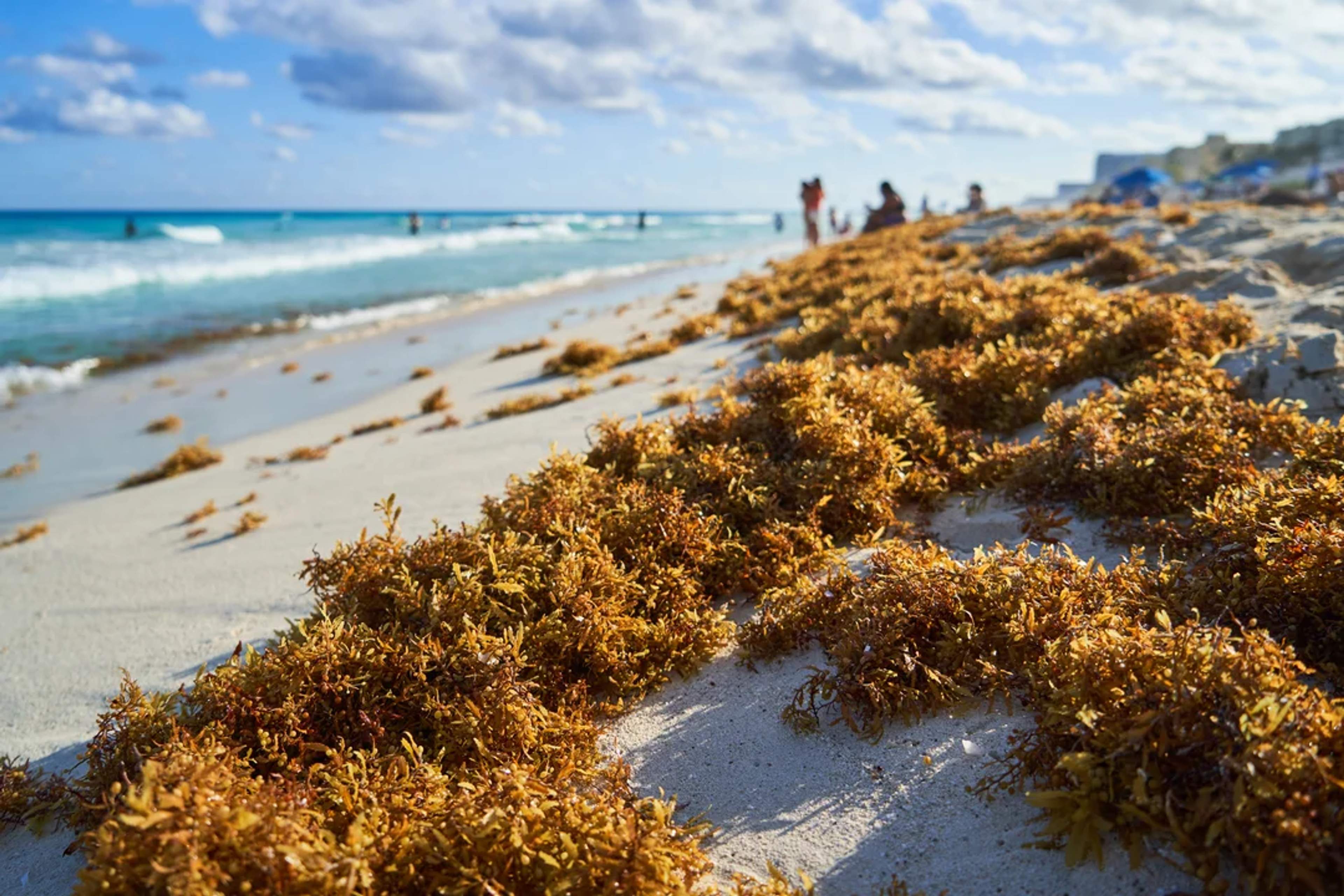
In Cancun, sargassum season usually runs from April through August, peaking between May and July. However, its arrival can be unpredictable. In some years, mats begin appearing as early as March and persist until October, depending on currents and wind conditions.
Forecasts for 2025 suggest a stronger-than-average season, with early sightings already reported by the Sargassum Monitoring Network. Still, conditions vary daily and from beach to beach. You might find one stretch of coastline full of seaweed, while another nearby remains completely clear.
For travelers seeking the lowest probability of seaweed, the dry season, between November and February, typically offers the cleanest shorelines. Even during peak months, early mornings or western-facing beaches often provide swimmable, scenic spaces.
In short, sargassum season is not absolute. It’s one factor to consider when planning your trip, but not a reason to avoid Cancun altogether. Staying informed and flexible is the best way to avoid disappointment.
4. Is Sargassum Harmful?
For most people, sargassum is more of a nuisance than a health concern. It isn’t toxic or dangerous in the water. However, once it begins decomposing on land, it can release hydrogen sulfide, a gas that causes a rotten-egg smell and may irritate sensitive individuals.
The CDC and EPA note that those with asthma or other respiratory conditions should limit exposure near large piles of decaying seaweed. Short-term exposure may cause eye or throat irritation in some people, especially in enclosed areas.
Simple precautions help minimize discomfort. Avoid thick seaweed piles, rinse off after swimming, and use water shoes to avoid stepping on hidden patches. Most resorts post daily updates so you can choose the best beach times and locations.
Ultimately, the vast majority of visitors experience no issues at all. With basic awareness and a bit of planning, sargassum doesn’t need to interrupt your beach vacation.
5. How Cancun Is Managing the Issue
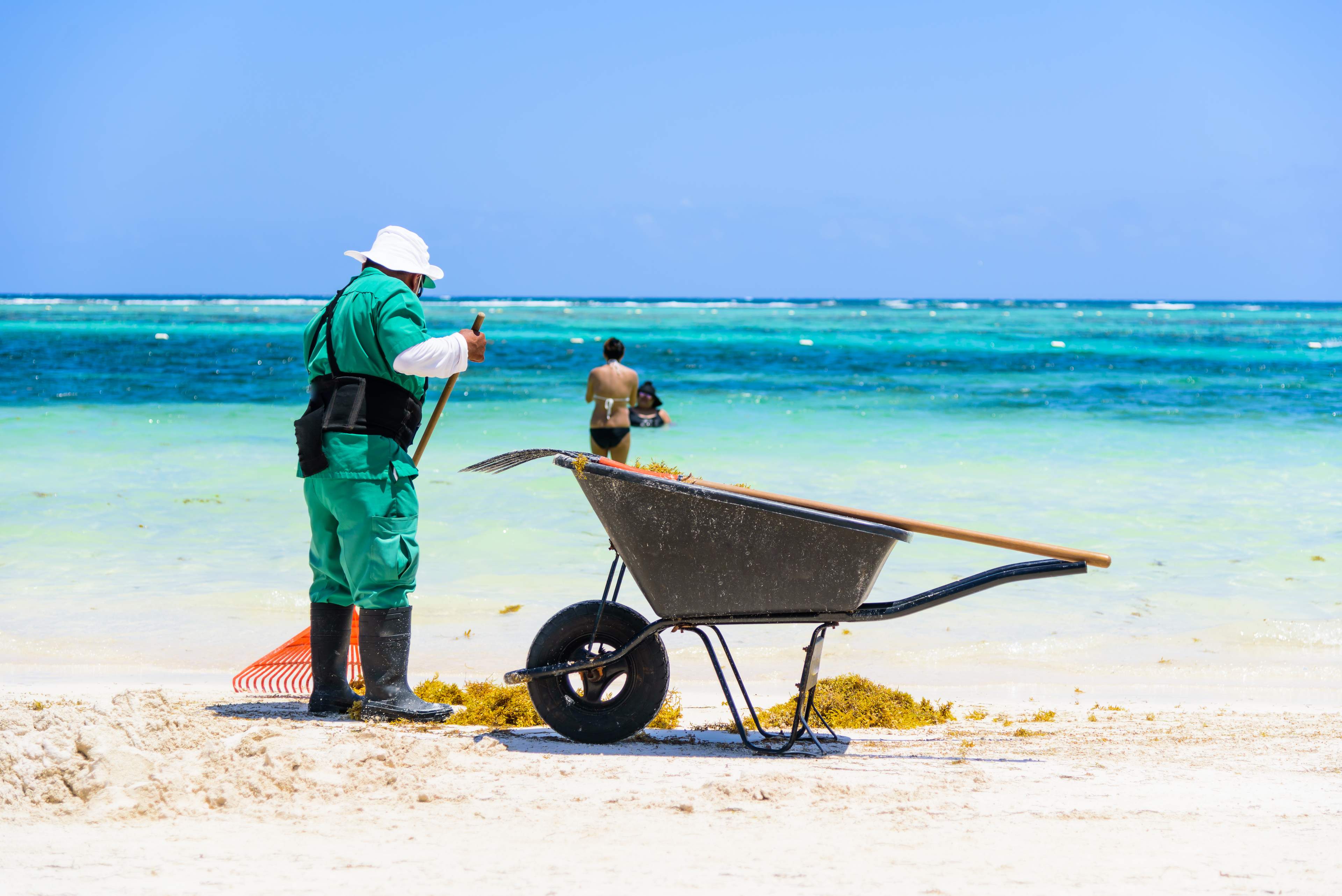
Cancun and the surrounding municipalities take the sargassum challenge seriously. Over the past few years, public and private sectors have implemented a combination of early detection, cleanup, and prevention strategies to protect both the environment and tourism.
Floating barriers are installed offshore to catch seaweed before it reaches the sand. Naval crews collect large mats in open water, while beach maintenance teams remove washed-up sargassum each morning before guests head out to swim or sunbathe.
Satellite tracking tools and local reports like the Sargassum Monitoring Network provide real-time updates, helping resorts and municipalities act quickly.
While no method can eliminate sargassum entirely, the goal is to manage it effectively. Most hotels in Cancun’s Hotel Zone maintain clean beach access for guests, even during high season. These coordinated efforts ensure that visitors can enjoy the shoreline with minimal disruption, no matter the time of year.
6. Where to Find Clearer Beaches
Even during peak sargassum months, some beaches remain consistently clear thanks to location, geography, and active maintenance. For example, Playa Norte on Isla Mujeres, located just off the coast of Cancun, is naturally protected from seaweed accumulation. A sailing trip like the Isla Mujeres Luxury Sailing tour offers a great way to enjoy those waters.
Beaches between kilometers 4–9 in Cancun’s Hotel Zone often receive less sargassum due to favorable currents. Western-facing shores in Puerto Morelos, and parts of Cozumel, such as those visited during the Cozumel Sea Safari (https://www.cancun-adventure.com/en/tour/cozumel-sea-safari/), also tend to stay cleaner.
Checking webcams, resort social media, or the Sargassum Monitoring Network before heading out can help you make smart choices daily. With a little planning, it’s easy to find pristine stretches of sand, even in the middle of the season.
7. What to Do if the Beach Isn't an Option
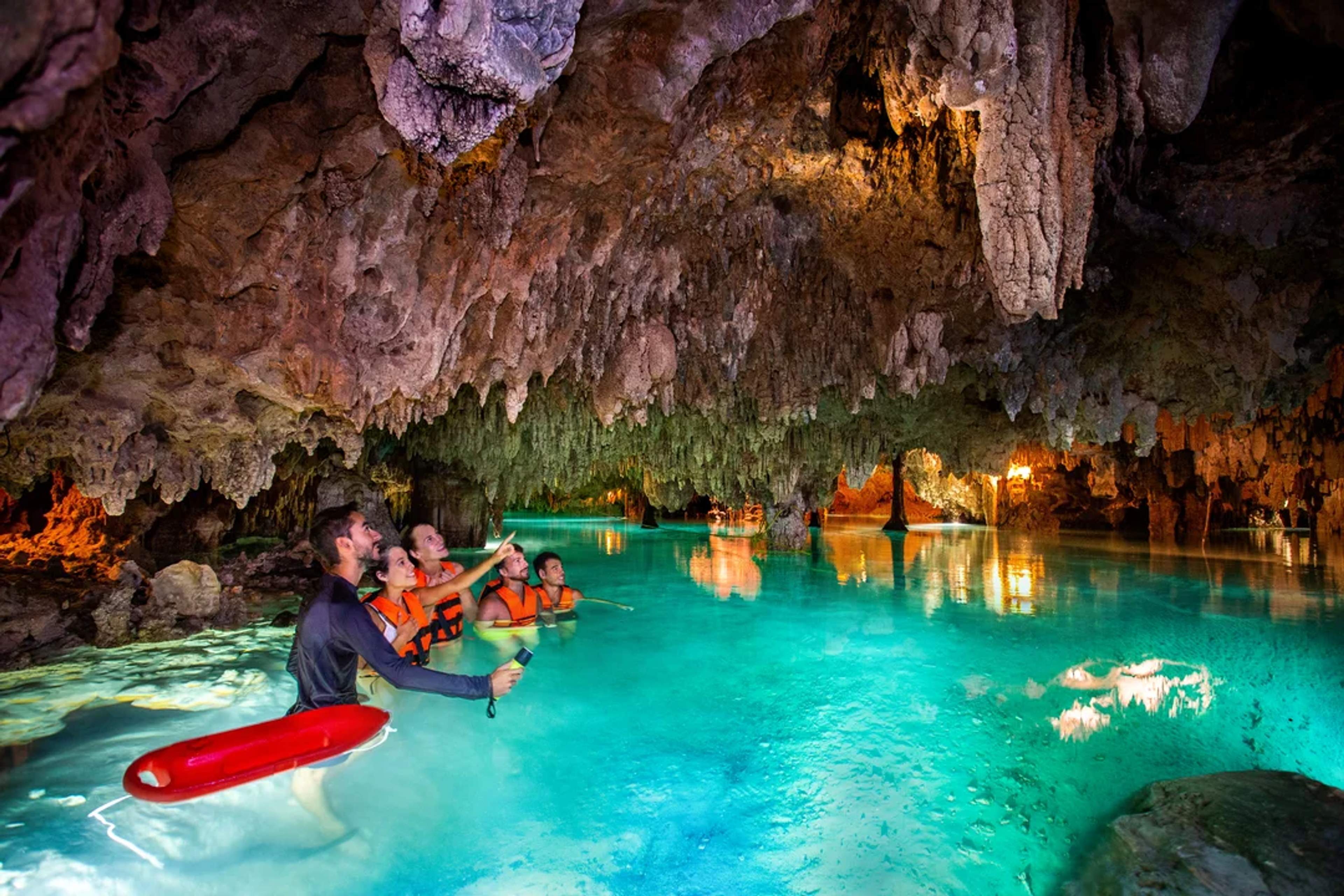
If sargassum affects your beach day, don’t worry, Cancun offers more than sand and surf. Inland experiences are untouched by seaweed and showcase the region’s rich natural and cultural heritage.
Cenotes like those visited on the Cenotes and Paradise Lagoon tour offer clear freshwater swimming, while archaeological sites such as Chichen Itza and Ek Balam let you explore ancient Mayan history.
Want something adventurous? Jungle ATV rides, snorkeling, or a Luxury Sailing & Snorkeling tour provide refreshing alternatives.
You can also dive into local flavors on The Taco Tour or the Gourmet Table Experience culinary experience. In short, sargassum may influence your schedule, but it doesn’t have to limit your adventure.
Conclusion
Sargassum is a natural occurrence; seasonal, shifting, and shaped by global environmental forces. While it may occasionally influence beach conditions in Cancun, it doesn’t define the destination. With lush jungles, freshwater cenotes, ancient ruins, and offshore waters that remain crystal clear, the Yucatán Peninsula offers countless opportunities for exploration, regardless of what washes ashore.
What matters most is preparation. Travelers who stay informed and flexible find that they can easily adjust their plans without sacrificing the quality of their vacation. Whether it’s a morning spent swimming in a cenote, an afternoon exploring a Maya temple, or an evening sailing into the sunset, unforgettable experiences await: onshore, offshore, and everywhere in between.
If you're looking for trusted, expertly guided alternatives during your stay, consider letting Cancun Adventures lead the way. Our curated tours are designed to help travelers enjoy the very best of the region rain or shine, sargassum or none. From culture and cuisine to adventure and nature, they specialize in creating seamless, memorable experiences.
So pack your curiosity, bring your sense of adventure, and trust that with the right partner, Cancun will surprise and delight, no matter the season.
